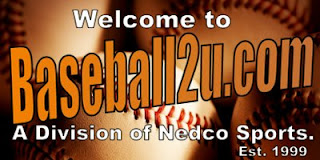
How to Create a Baseball Practice Plan
By
Jack PerconteThere are basically two things to consider when talking about how to create a baseball practice plan. The first is the pre-season practice plan and the second is the in-season plan. Of course, for teams that may play or stay together year round, there may be an off-season practice plan, too.
First, let's consider the pre-season plan. Coaches should decide how many practices a week they are going to have, which is usually based on the age of players and the philosophy of the level the team is playing. For example, travel baseball teams should practice more often than recreational teams, especially before the season. It may become more difficult for travel teams to practice as much once the season begins because of the greater number of games. With that in mind, travel teams must take advantage of their preseason practices more.
Additionally, coaches will base how in-depth strategic instruction they are expected to provide based on the level of play. For instance, recreational coaches should devote more time into the basic fundamentals, where as travel coaches should go into advanced detail on the finer points of the game, like pick-off plays, etc...
Following are suggestions that coaches should consider when drawing up their pre-season practices:
1. Write down every phase of the game including the fundamental skills of hitting, throwing, fielding, pitching and base running.
2. Write down every strategic game situation elements of the game like cutoffs and relays, run downs, pick-off plays, bunt plays and double steal situations, etc.
3. Decide on the length of practices and then begin to plug in the amount of time that will be devoted to a) fundamentals, b) strategic elements. After allowing a 15-minute warm-up period at each practice, below is some examples based on two-hour practices.
****** Fundamental Skills - Strategy, Game Situation
Practice 1 - 45 minutes --- 1 hour strategic
Practice 2 - 50 minutes -- 55 minutes
Practice 3- 55 minutes -- 50 minutes
Practice 4 - 1 hour -------- 45 minutes
Practice 5 - 1 Hour -------- 45 - Simulated Game
Practice 6 - 45 minutes--- 1 Hr - Simulated Game
Practice 7- 45 minutes -- 1 Hr - Intra -squad
Practice 8 - 45 minutes --- 1 Hr - Intra squad
Of course, this is just a basic model that coaches can go by with the goal of dividing practice time between the fundamental skill work and the strategic game work. Initially, less skill work is recommended until players get their arms and bats in shape, before devoting more time to this skill work. Coaches can adjust and vary their plan to meet their teams needs.
Other points to consider:
1. Homework on skill work should be given at the end of each practice.
2. As practices progress, coaches should gear more time towards the areas of baseball that are needed most. For example, extra base running work for teams that show bad base running skills.
3. Simulated games are when coaches set up certain game situations with regular pitcher, hitter and fielders, etc...
4. Attention to detail during warm-ups should not be neglected.
5. Keeping kids as busy as possible with small group stations and rotations is good when coaching help is available for the various stations.
6. The advantage of simulated games is that certain situations can be worked on over and over again. Reenacting plays that are done incorrectly until players do it correctly is crucial to improvement.
In season practice plan:
1. As games begin, periodic reviews of all strategic game situations should be done.
2. Coaches should use their pre-game time wisely to stay on top of skill work.
3. Practices can now be geared towards the areas of the game that teams need the most based on their recent game deficiencies.
4. Coaches are responsible for protecting pitchers arms at practice, especially as the season progresses.
5. Skill work should not be taken for granted as the season progresses. It is common for hitters to get off to a good start after working on hitting drills in the off- season only to have their hitting deteriorate when they neglect the hitting drills as the season progresses.
6. Cutting down on the length of practices may sometimes be necessary during the hot summer months so players do not get run down physically.
7. Coaches should take notes during games as to what their team should concentrate their next practice on.
Of course, being organized and prepared for every practice is important for successful baseball practices. Finally, a major sign of a good coach is that their team is better at the end of the season than at the beginning. This may not always show up in the win column, but definitely in how teams execute the strategic aspects of the game.
Former major league baseball player, Jack Perconte gives baseball hitting tips and batting practice advice for ballplayers of all ages. His baseball playing lessons, books and advice can be found at
http://www.baseballhittinglessons.com/baseball.
Jack is the author of two books, The Making of a Hitter and Raising an Athlete - his positive parenting advice and books can be found at
http://positiveparentinginsports.comArticle Source:
http://EzineArticles.com/?expert=Jack_Perconte ======================
BattingCageDoor.com








